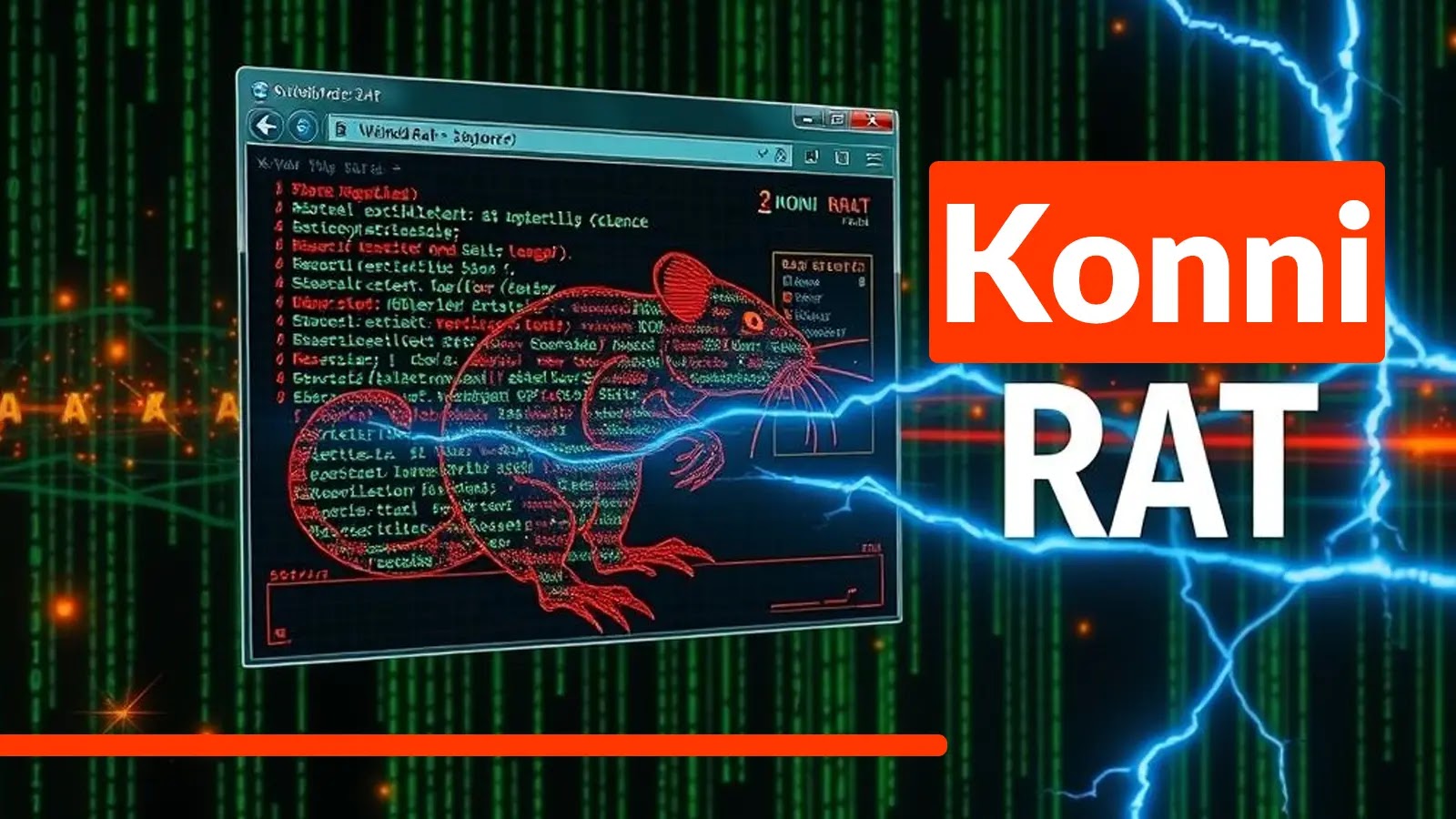The Konni Remote Access Trojan (RAT), historically linked to North Korean cyber operations, has evolved to exploit vulnerabilities within Windows Explorer, enabling attackers to execute sophisticated multi-stage attacks with enhanced stealth. This development poses significant threats to government institutions, diplomatic missions, and critical infrastructure organizations worldwide.
Evolution of Konni RAT
Konni RAT has been active since at least 2014, consistently adapting its methods to evade detection and enhance its capabilities. Initially, it targeted systems through malicious email attachments and exploited known software vulnerabilities. Over time, the malware has incorporated advanced techniques, such as using AutoIT scripts for stealth attacks ([cybermaterial.com](https://cybermaterial.com/konni-rat-uses-autoit-for-stealth-attacks/?utm_source=openai)) and exploiting vulnerabilities in widely used applications like WinRAR ([cybersecuritynews.com](https://cybersecuritynews.com/konni-apt-exploits-winrar-vulnerability/?utm_source=openai)).
Exploitation of Windows Explorer
In its latest iteration, Konni RAT leverages vulnerabilities in Windows Explorer’s file handling processes. By exploiting the DLL search order, the malware places a malicious DLL in a location where Windows Explorer loads it instead of the legitimate system file. This technique allows the malware to execute code with elevated privileges without triggering traditional security alerts.
Infection Mechanism
The attack typically begins with spear-phishing emails containing seemingly innocuous document attachments. When opened, these documents initiate a complex infection chain:
1. Document Execution: The user opens a malicious document, often a Word file with embedded macros or a shortcut file (.lnk) disguised as a legitimate document.
2. Macro Activation: If macros are enabled, the document executes a VBA script that extracts and runs a batch script (e.g., `check.bat`).
3. System Checks: The batch script performs various checks, such as verifying the operating system version and architecture, and detecting remote connection sessions.
4. DLL Execution: Based on the system checks, the script executes a malicious DLL (e.g., `wpns.dll`) using parameters that facilitate User Account Control (UAC) bypass and establish persistence.
5. Persistence Establishment: The malware modifies registry entries and creates scheduled tasks to ensure it remains active across system reboots.
6. Command and Control (C2) Communication: The RAT establishes encrypted communication with its C2 server, allowing attackers to execute commands, exfiltrate data, and deploy additional payloads.
Capabilities and Impact
Once installed, Konni RAT provides attackers with extensive control over the compromised system, including:
– Data Exfiltration: The malware can capture screenshots, extract saved credentials from web browsers, and access sensitive files.
– Command Execution: Attackers can execute arbitrary commands, enabling them to manipulate the system, deploy additional malware, or move laterally within the network.
– Persistence: By modifying system settings and leveraging legitimate processes, the malware ensures it remains active and undetected over extended periods.
The impact of these attacks extends beyond immediate data theft. Once established, the malware creates a persistent backdoor that allows threat actors to maintain long-term access to compromised networks, potentially leading to lateral movement, privilege escalation, and exfiltration of sensitive information.
Detection and Mitigation Strategies
Given the sophisticated nature of Konni RAT’s latest iteration, organizations should implement comprehensive security measures:
– Email Security: Deploy advanced email filtering solutions to detect and block phishing attempts.
– User Training: Educate employees on recognizing phishing emails and the risks of enabling macros in documents from untrusted sources.
– Endpoint Protection: Utilize endpoint detection and response (EDR) solutions capable of identifying and mitigating fileless malware and living-off-the-land attacks.
– System Hardening: Regularly update and patch operating systems and applications to address known vulnerabilities.
– Behavioral Analysis: Implement monitoring tools that analyze system behavior to detect anomalies indicative of malware activity.
Conclusion
The continuous evolution of Konni RAT underscores the persistent threat posed by state-sponsored cyber actors. By exploiting legitimate system processes and employing advanced evasion techniques, this malware presents a formidable challenge to traditional security measures. Organizations must adopt a proactive and layered security approach to effectively detect, prevent, and respond to such sophisticated threats.


